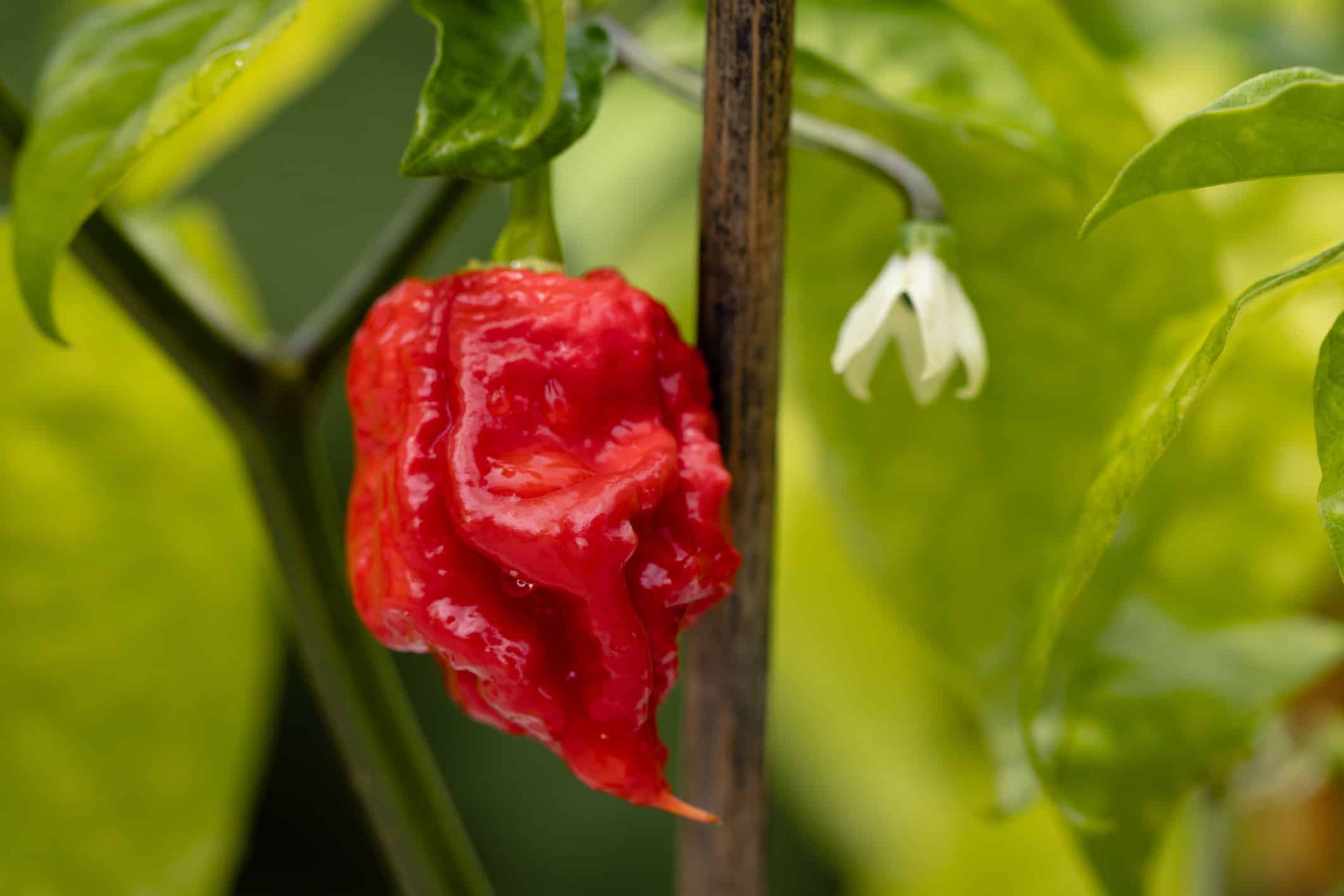One man is responsible for not one, but two, of the spiciest peppers in the world. That man is Ed Currie.
He’s dedicated decades to crafting the most explosive, pungent chili peppers on Earth. He’s the breeder behind the Carolina Reaper, which was the spiciest pepper in the world until 2023. This year, he beat his own record with an even spicier pepper: Pepper X.
Learn more about Ed Currie, his business, and the amazing peppers he’s created below.
Who Is Ed Currie?
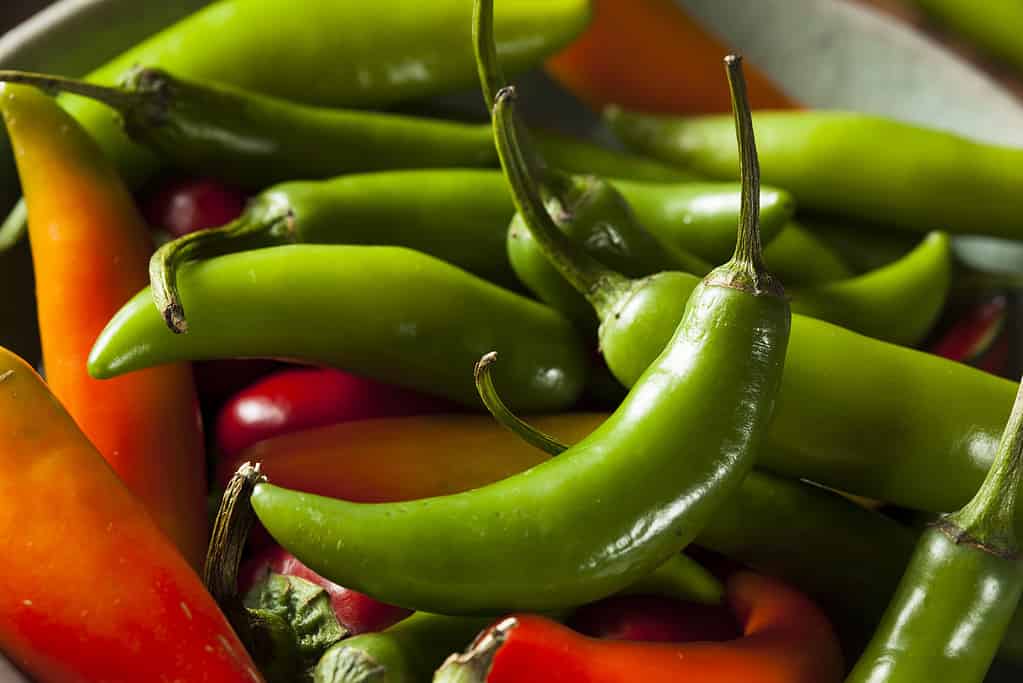
While Ed Currie is responsible for the hottest peppers in the world, he also grows a significant amount of milder peppers.
©bhofack2/iStock via Getty Images
Early Days
Currie was born and raised in West Bloomfield Township, Michigan, a suburb of Detroit with a moderate population. He attended Central Michigan University, which is located in Mount Pleasant, Michigan. Born in 1963, he started investigating peppers as a young adult in the 1980s. He was curious about the way that peppers and things like disease and lifestyle could interact with one another.
Michigan isn’t the best place to grow peppers. Peppers are very sensitive to the cold, and Michigan offers an overwhelming and long-lasting cold season. Currie took his pepper project on the road and moved to South Carolina, a climate better equipped to support the growth of peppers. It was in South Carolina that Currie began the process of crossbreeding peppers.
The ’90s and Onward
By the 1990s, Currie’s pepper project had exploded. After only a decade of growing his pepper curiosity, Currie had grown over 800 pepper plants. His yard was absolutely bursting with plants and he had taken to growing plants at his friends’ houses, too! Currie was a man with a mission: a spicy mission!
A decade after that, Currie and his wife, Linda Currie, purchased a farm to support his never-ending passion for growing peppers. On the farm, Currie can grow over 100,000 pepper plants. This makes his 800 plants of the 90s look measly! In 2003, he launched his own company, PuckerButt Pepper Company, to share his love of peppers with the public.
In the following decades, Currie would create some of the spiciest peppers known to man. He’s constantly topping his own records, and his passion for peppers is clear. Oh, and he’s gained the nickname “Smokin'” Ed. The cause of that nickname is obvious!
PuckerButt Pepper Company
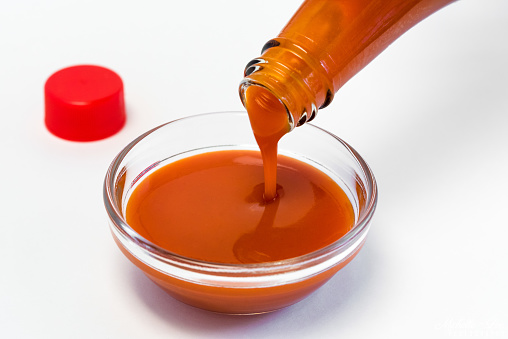
PuckerButt Pepper Company sells dozens of different hot sauces of varying spice levels.
©Michelle Lee Photography/ via Getty Images
Founding
PuckerButt Pepper Company was founded in 2003 in Fort Mill, South Carolina. Currie’s passion for peppers was so widespread that he just had to begin sharing it with the world.
Their company emphasizes sharing expertise in natural farming practices. They package and produce the peppers used by the company to ensure the best agricultural practices are being utilized. PuckerButt Pepper Co. seeks to educate and inspire pepper lovers around the world. They sell peppers, snacks, and sauces, as well as promote pepper recipes for this purpose.
Products
PuckerButt Pepper Company provides a few different access points to the incredible peppers Ed Currie creates. The primary goods sold by the company are hot sauces and seeds. That’s right! You can purchase seeds directly from this company and grow your own crazy-hot peppers at home! However, Pepper X is presently patented in a way that limits the company from selling those seeds at this point. But you can bring home the seeds of the astonishingly hot Carolina Reaper!
PuckerButt Pepper Company also sells chocolates, jams, seasonings, and other snacks that infuse these extra hot peppers with other ingredients. The company even sells Carolina Reaper beef jerky!
What is Crossbreeding?

While Ed Currie intentionally crossbreeds peppers, it can occur naturally, as well. If you grow two types of peppers near one another, they may accidentally cross-pollinate themselves!
©Vitalii M/Shutterstock.com
Ed Currie creates his peppers by crossbreeding different types of pepper to create a more and more spicy result. Crossbreeding means taking the pollen of one type of pepper and fertilizing a different type of pepper with it. The seeds of the resulting pepper will be a crossbred version of the two peppers that the farmer used in fertilization.
Crossbreeding or cross-pollination takes a while due to the ways that plants cycle. The new type of pepper is in the seeds of the first pepper created since crossbreeding, not the skin. So if you crossbreed a jalapeno and a bell pepper, they will still taste like a jalapeno and a bell pepper the following year. However, that year, the pepper that received the other pepper’s pollen will contain seeds that represent the fusion of a jalapeno and bell pepper. Those seeds need to be planted to rear the results of the crossbreeding.
Currie uses the paintbrush technique to cross-pollinate his peppers. He removes the pollen from one pepper with a paintbrush and then paints the pollen onto the receiving pepper. It’s important that this process occurs prior to the pepper pollinating itself. Peppers naturally self-pollinate, so Currie’s crossbreeding is an interruption of that process. If the pepper has already self-pollinated, cross-pollination cannot occur.
The Carolina Reaper

The wrinkles on the Carolina Reaper increase the surface area of the pepper. This means there is more room for spice, resulting in a spicier pepper! Pepper X is also very wrinkly.
©Adrian_am13/Shutterstock.com
The first record-breaking pepper that Ed Currie created was the Carolina Reaper. This well-known pepper won the Guinness World Record for “World’s Hottest Chili” in 2013. The Carolina Reaper is a hybrid pepper, born from the Naga pepper of Pakistan and the La Soufriere pepper of Saint Vincent.
Scoville Heat Units
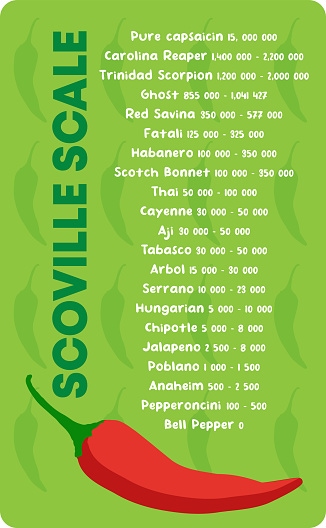
Scoville scale hot pepper spiciness heat unit table
©Julie Deshaies/iStock via Getty Images
This pepper is unbelievably hot. Heat, or pungency, is measured in something called Scoville heat units. Scoville heat units represent the amount of spice within a chili pepper. Capsaicin is the chemical that brings heat to the pepper, so Scoville heat units generally measure the presence and concentration of capsaicin within a pepper.
The Scoville scale ranges from 0 SHUs (bell peppers) to 15,000,000 SHUs (the heat level of pure capsaicin). Each type of pepper has a range of potential SHUs. Jalapenos, for example, range from 2,500 to 8,000 SHUs.
How Hot is the Carolina Reaper?
The Carolina Reaper pepper has a Scoville heat range of 1,400,000 to 2,200,000 SHUs. The pepper that was measured by the Guinness World Record book was 1,640,000 Scoville heat units, but there have since been Carolina Reapers assessed with higher spice levels. 1.64 million was enough to break the record, however!
Pepper X

Capsaicin is contained within the locules of a pepper, not the skin. The locules is the fleshy tissue surrounding the seeds.
Pepper X has just stolen the first-place spot as the spiciest pepper in the world, beating the record previously held by the Carolina Reaper. Thankfully, Ed Currie was also the creator of this pepper!
While the Carolina Reaper’s heat levels register between 1.4 million and 2.2 million Scoville heat units, Pepper X has been registered with a 2.69 million Scoville heat unit measurement. That’s pretty hot!
Pepper X beat out the Carolina Reaper as the spiciest pepper in the world in 2023. Since then, this pepper has been integrated into some hot new PuckerButt Pepper Company products! There are multiple hot sauces for sale by PuckerButt that utilize the spice level of Pepper X. The seeds of Pepper X can’t be purchased at this time due to patenting.
Where Can I Watch Ed Currie’s Peppers In Action?
Ed Currie’s peppers are pretty famous. The viral YouTube game show, Hot Ones, utilizes a hot sauce produced by PuckerButt Company. The PuckerButt hot sauce on the show is called “The Last Dab,” and it was created just for use by the program. On Hot Ones, celebrities get interviewed while eating spicier and spicier hot wings. “The Last Dab” is the sauce used on the final wing. It has a Scoville heat measurement of 2 million SHUs.
Ed Currie himself has also been featured on television a few times. He appeared on Dirty Jobs, as well as the Netflix series We Are The Champions. There was a chili pepper episode where Ed Currie’s hot peppers just had to make an appearance.
Conclusion
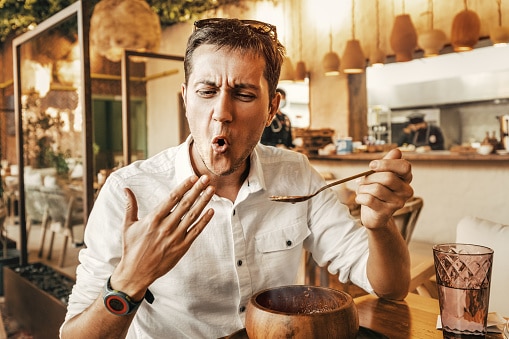
While eating spicy peppers can be extremely uncomfortable, there have not been clear studies showing damage done by spicy peppers. However, they can cause abdominal cramping. They can also cause medical issues for folks with heart conditions.
©frantic00/iStock via Getty Images
Ed Curries is a mastermind of hot peppers. He has dedicated over forty years to creating some of the spiciest peppers on Earth. He continuously beats his own records, crafting more and more hot chili peppers as time passes. Support his passion and his peppers by checking out PuckerButt Pepper Company. Tread carefully, though! These peppers are not for the faint of heart!
Thank you for reading! Have some feedback for us? Contact the AZ Animals editorial team.

